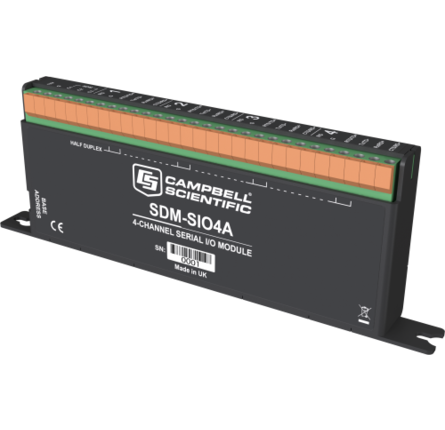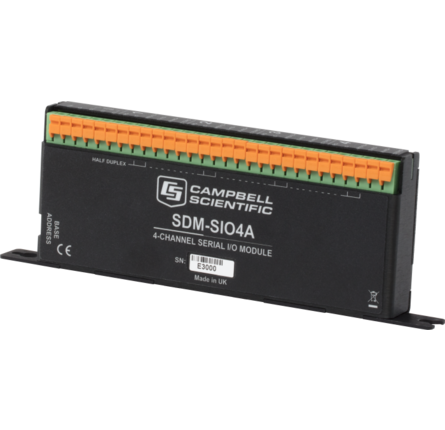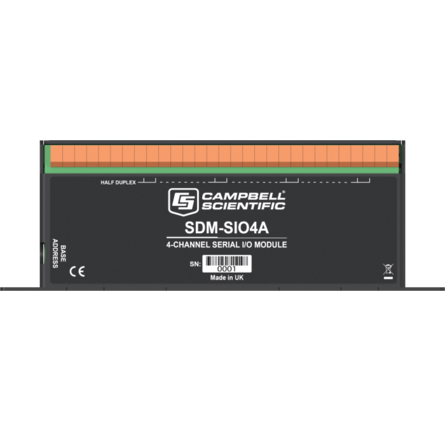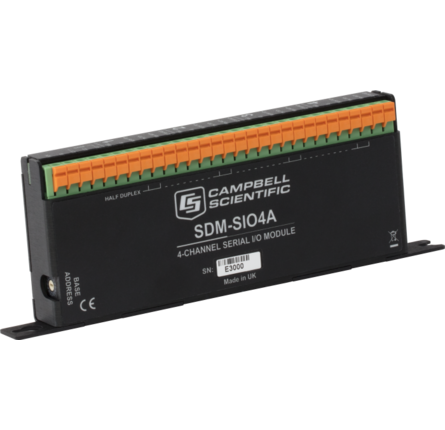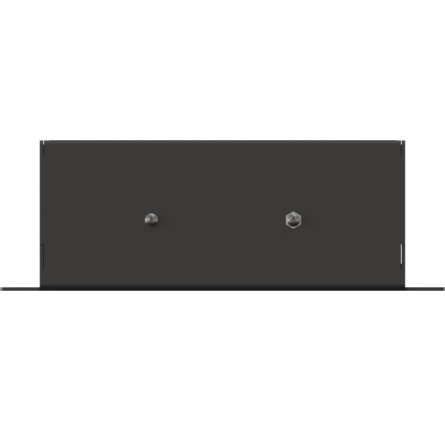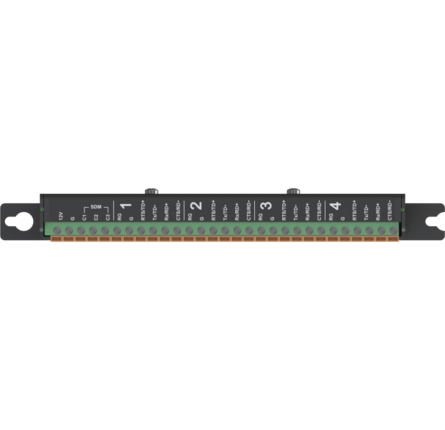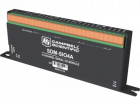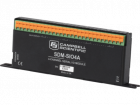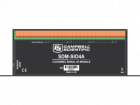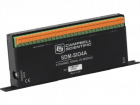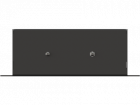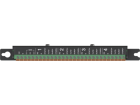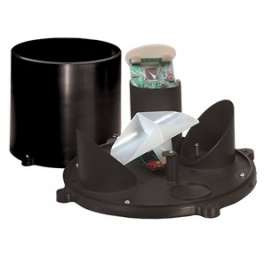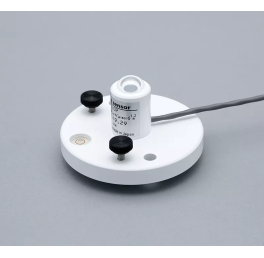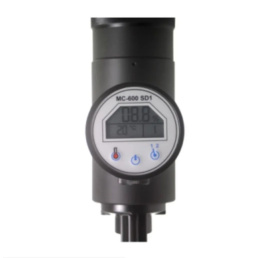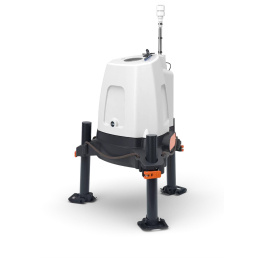The SDM-SIO4A is a serial I/O expansion module for Campbell Scientific data loggers. It is designed to add four additional and individually configurable and addressable RS-232, RS-422, or RS-485 (half- or full-duplex) serial ports to an SDM-capable data logger for the purposes of interfacing with intelligent sensors, actuators, or displays. Up to three SDM-SIO4A modules can be connected to a single data logger SDM port. The SDM-SIO4A channels behave much like a native data logger serial port and use the same familiar serial I/O commands. The SDM-SIO4A is transient and surge protected to IEC61000-4-5 level 4 on the serial port interfaces, avoiding the need for separate transient protection in most applications.
Note: The SDM-SIO4A is not a direct replacement for the SDM-SIO4. The SDM-SIO4A consists of four SDM-SIO1A modules in a single package. Consequently, the SDM-SIO4A is a good replacement for up to four SDM-SIO1 modules or as an alternative to the SDM-SIO1A.
The SDM-SIO4A connects to multiple remote serial devices using industry-standard hardware that can be set to true RS-232, RS-485, or RS-422 signal levels. When operating in RS-232 mode, the channel also supports hardware handshaking. RS-422 mode is functionally the same as RS-485 mode, except the connection is limited to a point-to-point system. Connections and programming for RS-422 are otherwise identical to RS-485.
The SDM-SIO4A will accept serial data up to 6143 bytes and store it in its buffer. This allows remote equipment to transmit large amounts of data without needing to stop other processes in the data logger.
Up to three SDM-SIO4A modules can be connected to a single data logger using the SDM port, allowing a user to connect 12 different serial devices to a data logger with ease. This is in addition to any connections made to the data loggers via other serial ports.
| Function | Expands the number of serial devices that can communicate with a data logger. |
| Number of Channels | 4 |
| Supported Data Rates | 300, 1200, 2400, 4800, 9600, 19200, 38400, 57600, and 115200 bits/s |
| Supported Modes of Operation |
|
| Supported Data Format |
|
| Auto Baud Rate Detection | Auto baud rate detection is NOT supported. |
| PakBus Communications | Use of the serial port for general PakBus communications is not currently supported. |
| Voltage |
|
Buffer Sizes
| -NOTE- | Both transmit and receive buffers are fill and discard type. That is, after the buffers become full, no new information is accepted, and all further data is discarded until space is made when the data logger requests data from the SDM-SIO4A. |
| Transmit Buffer Size | 767 bytes (buffer from the data logger to the sensor) |
| Receive Buffer Size | 6143 bytes (buffer from the sensor to the data logger) |
Current Consumption
| Active Current | 9.6 to 11.7 mA (depending on transmit mode and connections made) |
| Standby Current |
|




